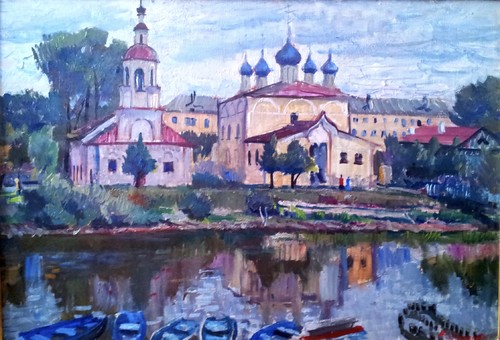"Vologda" by Nina Sergeeva
Posted on January 25, 2017

Two conflicting theories exist as to the date of Vologda's foundation.
The year 1147 is the official date first fixed in 1780 by Alexey Zasetsky in his book "Stories about miracles of Geraniums of Vologda". The story mentions that in 1147 the Trinity Monastery was founded close to the Volga River. The date of the foundation of the monastery is then taken as the date of the foundation of the city of Vologda and is mentioned in official city documents. This date, which would make Vologda to be of the same age as Moscow, is, however, not supported by any scientific data and is considered by authoritative sources to be fictional. The story was only written in 1666 by a certain Foma, who got a request from Archbishop Markel to produce the vita of Gerasimus. Foma himself admitted that he had no sufficient data on the biography. The story contains many contradicting details. Besides, the monastic life in the Russian north was not known in the 12th century: the first monastery in Vladimir was founded in 1152, in Rostov in 1212, in the Belozersk area in 1251. Archeological excavations do not confirm this date either. Instead, they demonstrate that the city of Vologda was founded in the 13th century.
The year 1264 was the first mention of Vologda when it was included in the list of possessions of the Novgorod Republic in the agreement between the Republic and the Grand Prince of Vladimir. This date is also supported by archaeological data.
The nucleus of Vologda in the 13th century was not located in the area which is now the city center, but rather the area known now as "Lazy ground" (Ленивая площадка), close to the Resurrection church. This area was the center of Vologda up to 1565. Until that year, no stone constructions existed in Vologda: all of the city fortifications, bridges, houses, churches, and industrial enterprises were made of wood.
Post a comment...
All recent posts and archives...




